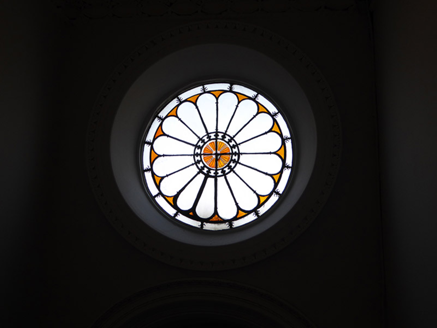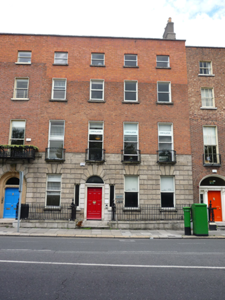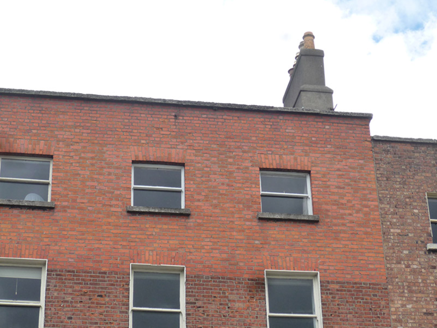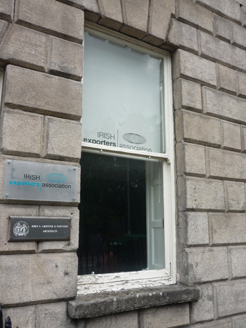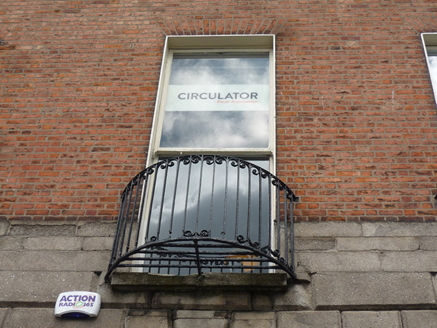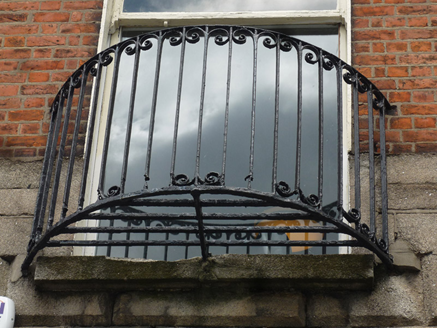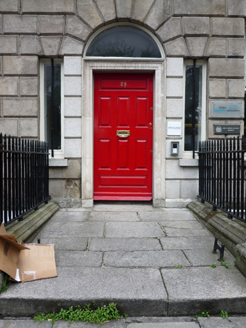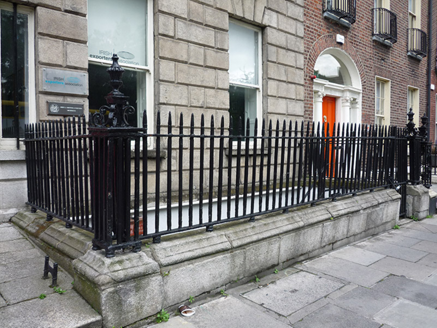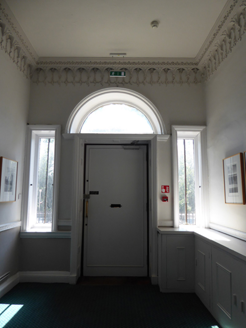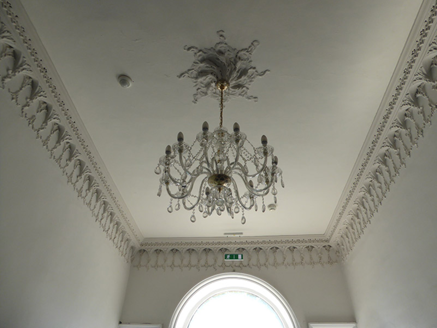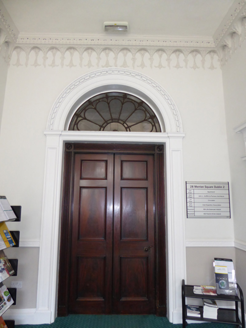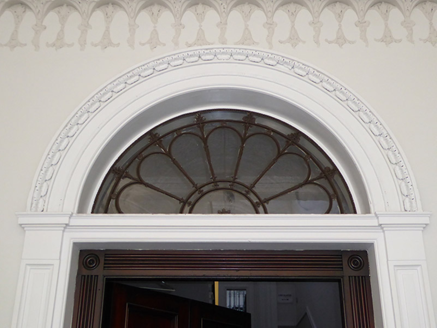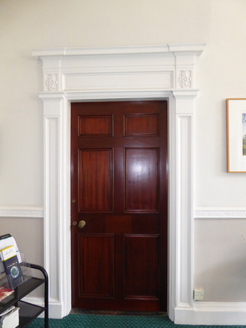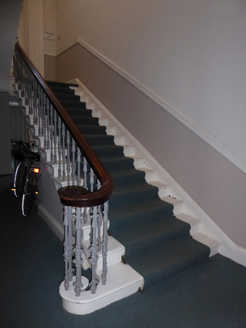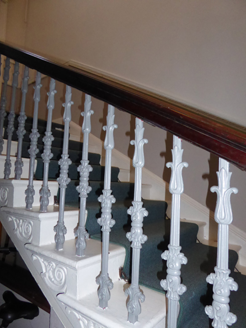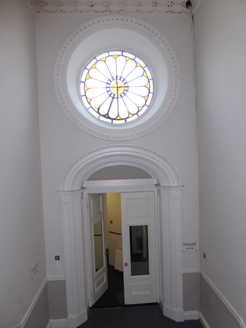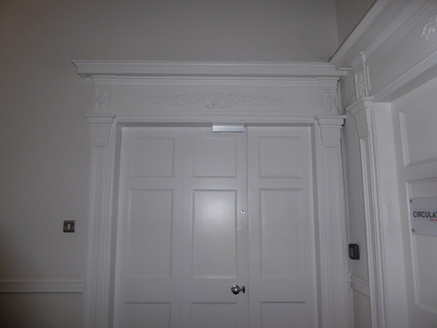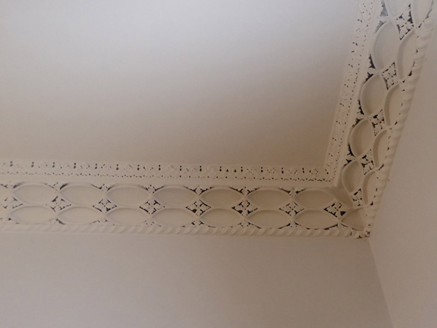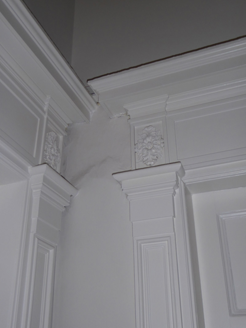Survey Data
Reg No
50100375
Rating
Regional
Categories of Special Interest
Architectural, Artistic
Original Use
House
In Use As
Office
Date
1770 - 1785
Coordinates
316803, 233606
Date Recorded
29/07/2016
Date Updated
--/--/--
Description
Attached four-bay four-storey former house over basement, built c. 1780 as unequal pair with No. 27, having two and three-storey return and addition to rear. Now in office use. Natural slate roof, front part pitched, behind reconstructed red brick parapet with masonry coping, and rear part having roofs perpendicular to street, pitched to west with hip to north end and hipped roof to east. Shouldered rendered chimneystacks to east party wall and diminutive to rear with yellow clay pots; concealed rainwater goods, with replacement uPVC downpipe to rear. Flemish bond red brick walls, refaced above second floor window head level, having rusticated granite ground floor to front facade on granite plinth over painted rendered basement walling; reddish brick to rear with parapet refaced in yellow-brown brick. Square-headed window openings, diminishing in height to upper floors, with painted rendered reveals and granite sills (some painted), single oculus to rear having leaded stained-glass petal light. Timber sliding sash windows with horns, front elevation having six-over-six pane windows and one bipartite six-pane fixed light to basement, and one-over-one pane elsewhere; rear elevation having six-over-six pane to first floor, two-over-two pane to second floor and three-over-three pane to top floor. Bowed decorative wrought-iron balconettes to first floor of front elevation, and iron grilles to basement. Round-headed principal doorway with rusticated granite surrounds, shallow stepped masonry architrave, plain fanlight and eight-panel timber door with weatherboard and brass furniture. Door flanked by narrow side-lights with replacement glazing. Granite entrance platform bridging basement, with iron boot-scrape and with single step to street level. Basement area enclosed by wrought-iron railings with decorative wrought and cast-iron corner posts on moulded granite plinth. Separate entrance to mild-steel steps accessing basement. Interior sub-divided and conceals interesting plan in which centre bay contains secondary stair. Entrance hall has elaborate cornices and ceiling rose; round-headed internal door opening with panelled pilasters, fluted architrave, moulded cornice, moulded archivolt and leaded petal fanlight; stairs hall has timber dog-leg staircase with paired cast-iron balusters to each tread, carved tread ends and carved timber handrail. Stairs hall lit by round stained-glass window above elliptical-headed doorway leading into return. Original joinery includes pilastered door surrounds with decorative entablatures and moulded cornices and replacement timber panelled doors. Elaborate cornices to first floor. Three-bay two-storey mews building to rear of plot, set back from lane, having M-profile slate roof with chimneystack to one gable, and brick walls. Forecourt to mews building infilled with flat-roofed building and rear boundary to plot is rendered wall with segmental-arch vehicular entrance having projecting rendered piers and metal gate, with square-headed pedestrian entrance to side.
Appraisal
No. 28 Merrion Square was built by George Ensor, while John Ensor built the adjoining no.27 and the pair creates a cohesive seven-bay frontage. The pair have an unusual plan, the centre bay is shared, containing a service stair for each house. Like much of the north side of the square, nos.27-28 have granite rustication to the ground floor, but they are the last in the row to have this treatment, likely because the Fitzwilliam quarry, from where the stone was sourced, was closed in 1770. The relative plainness of the well-balanced façade is partially relieved by the decorative ironwork of the balconettes and setting features, although the external appearance remains relatively austere. Although subdivided, the interior features some original joinery and decorative plasterwork. No. 28 was built as part of the original development of the Georgian square. Laid out as part of the Fitzwilliam Estate, it is one of the best-preserved Georgian streetscapes in Ireland. The north, east and south sides of the square are lined with terraced houses of eighteenth and nineteenth-century date, while the west side is terminated by the garden front of Leinster House . The houses maintain a relatively uniform building height and design, attributed to standards promoted in Fitzwilliam's leases. Individuality was introduced through the design of doorcases, ironwork and interior decorative schemes.
